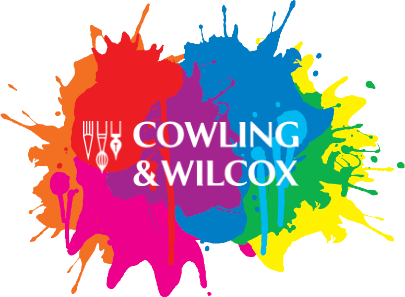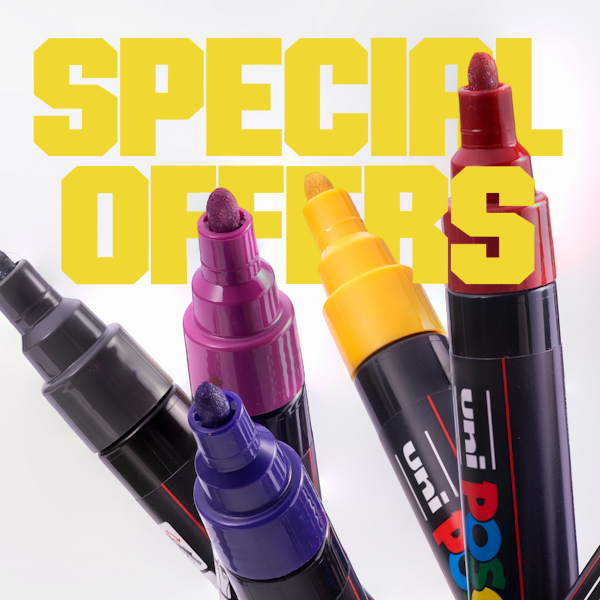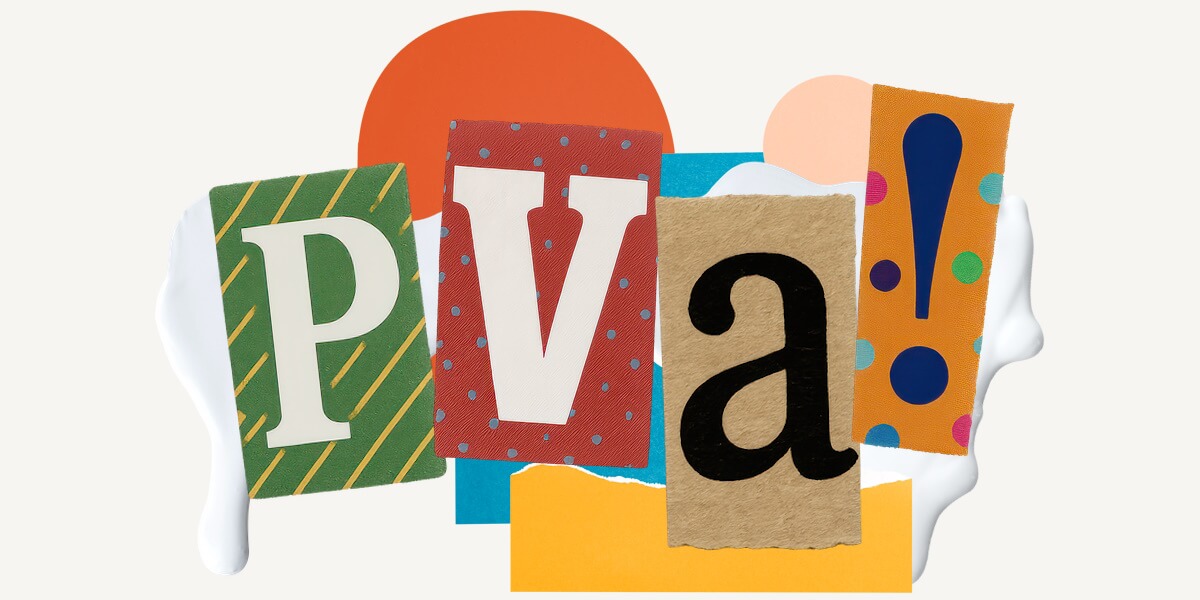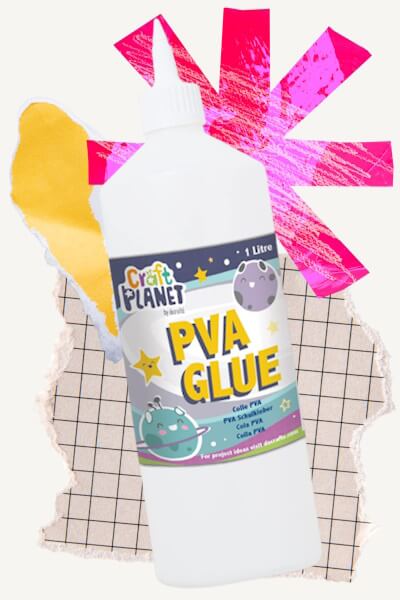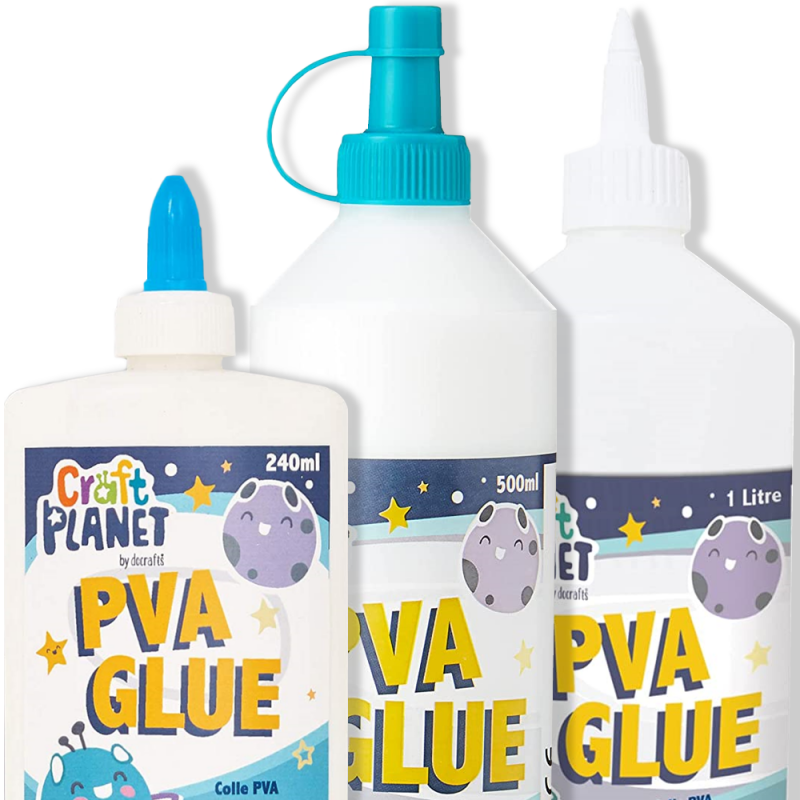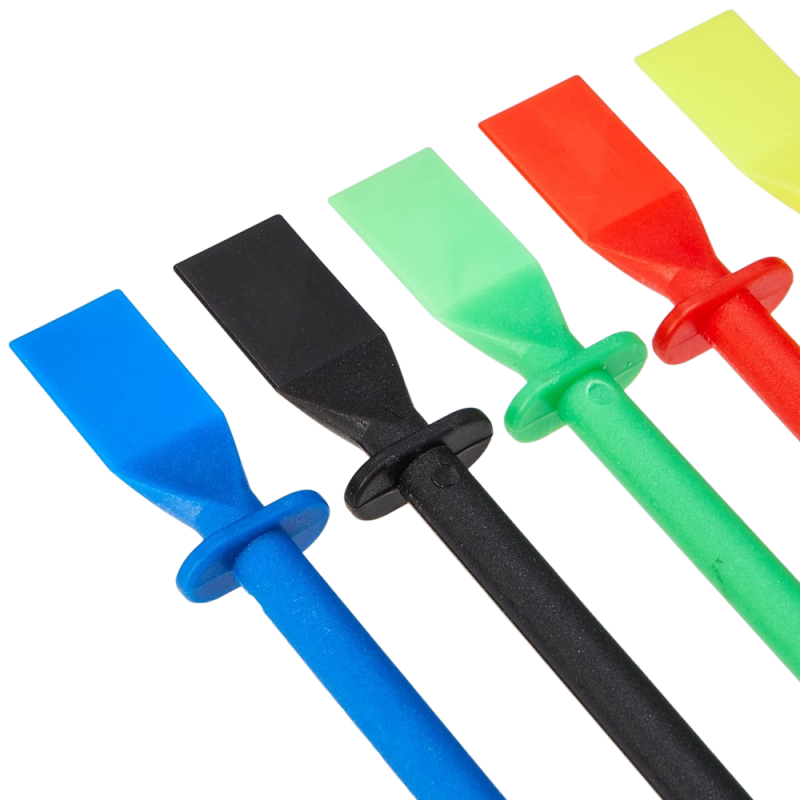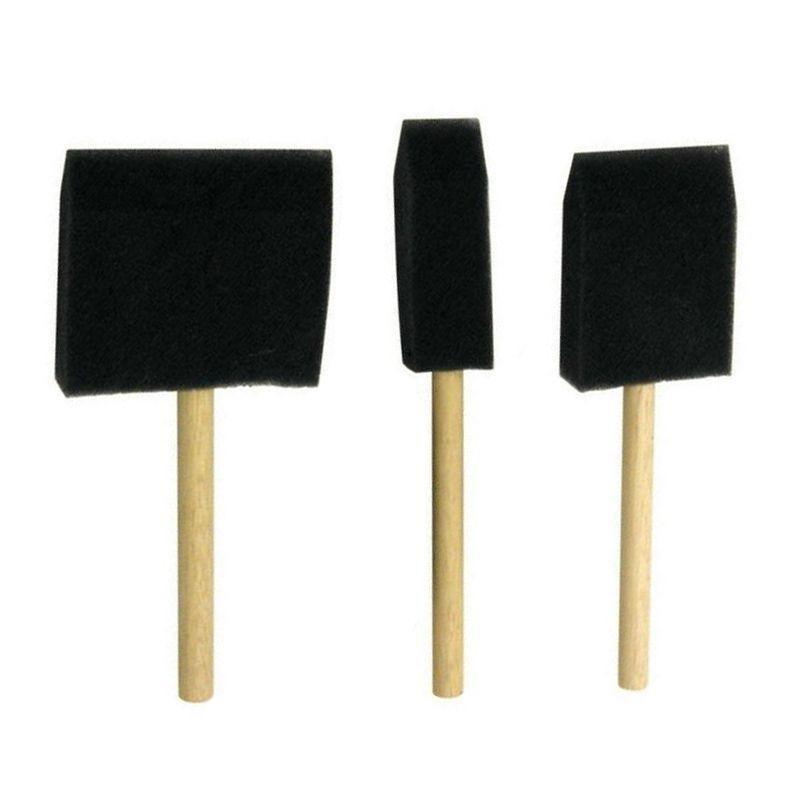PVA Glue: Uses, Benefits, and How to Get the Best Results
Adhesives come in many shapes & forms, but few can boast being as truly versatile as PVA glue.
From school projects to crafts and even woodworking, PVA glue (AKA white glue, school glue or wood glue) has endless uses & countless applications, showing just why it remains a go-to for artists, crafters & DIY enthusiasts of all ages.
In this short guide, we’ll be exploring the benefits of PVA glue, discussing its most popular uses and how to use it effectively. Hopefully by the end, you’ll have a deeper understanding of this reliable, accessible adhesive.
What is PVA Glue?
PVA (short for PolyVinyl Acetate) is a non-toxic glue that forms strong bonds on porous surfaces like paper, fabric or wood.
This easy-to-use adhesive is made using a water-based formula that not only ensures it’s safe for creatives of all ages, but also simple to clean up in the aftermath of a messy craft session or school project. All of this, combined with its wide availability, has made PVA glue one of the most popular adhesives across the globe (which isn’t likely to change any time soon!).
Benefits:
- Simple, easy-to-use application
- Non-toxic, water-based formula
- Easy to clean up after messy sessions
- Widely available and often very affordable
- Forms surprisingly strong bonds on porous materials
- White when wet for easy applications, then dries clear
Types of PVA glues
Whilst they all share similar traits, not all PVA glues are the same. Common types include:
- Standard PVA Glue – Used in schools and crafts, perfect for paper and light projects.
- Washable PVA Glue – An easy to clean, kid-friendly option ideal for craft activities.
- Wood Glue (Yellow PVA) – Stronger formulation for woodworking and furniture making.
- Waterproof/Resin-Modified PVA – A more robust version for outdoor projects and external woodwork.
Top uses of PVA glue
The sheer versatility of PVA glue really cannot be underestimated, below are just SOME of the most common or popular applications.
- Art Projects – Popular for collages, mixed media and even acrylic pouring.
- Crafts & Hobbies – Perfect for paper, cardboard, fabric and other DIY projects.
- Sealing Surfaces – Able to seal porous surfaces like plaster, cement, or drywall.
- Bookbinding – Flexible yet strong, ideal for binding pages together.
Using PVA glue effectively
Although easy-to-use, there are methods to getting the best results with your PVA glue, for instance:
- Prepare your surface – Make sure it’s clean, dry (and porous).
- Apply thin, even layers – Start small, too much glue can weaken the bond.
- Give the glue time to dry – Allow 30–60 minutes (initial set) or 24 hours (full cure).
- Cleaning up afterwards – Before the glue dries, wash away excess with warm water.
PVA glue vs. other adhesives
Sure, PVA glue is versatile, non-toxic, strong and such. But how does it stack up against other adhesives?
- Super Glue – Quicker to set, but less flexible, safe or easy to clean.
- Hot Glue – Bonds quickly but doesn’t last as long as PVA on porous surfaces.
- Epoxy – Stronger on non-porous surfaces, although harder to use and much more toxic.
Seven Artistic Applications of PVA glue
When most people think of PVA glue, they picture a simple adhesive for school projects or paper crafts, but this versatile material has a whole range of artistic applications people don’t often consider. With a little ingenuity, PVA glue can be transformed into a tool for textures, painting, sculpturing and even mixed media art.
The following are seven suggestions for interesting ways to use PVA glue in your work!
Crackle Glaze Effect
If, like us, you’ve ever admired the more weathered aesthetic of aged paint surfaces, you can recreate this effect with PVA glue. This easy-to-do technique adds character and vintage charm to paintings & craft projects.
What You'll Need
- PVA glue
- Suitable paintbrush
- 2 contrasting acrylic paints
What You'll Do
- Paint your base colour, allow it to dry
- Brush a generous coat of PVA glue over the surface
- While still tacky, start painting your second colour
- As the glue dries, it creates cracks that reveal the base layer underneath
Raised Relief Drawing
For those of us looking to produce textured, tactile designs, PVA glue even works beautifully as a drawing medium. Simply apply your PVA as you please, then once dry, the raised lines can be painted over or highlighted for striking visual effects.
What You'll Need
- PVA glue
- Heavy paper or canvas
- Acrylic paints or inks
What You'll Do
- Using PVA glue directly, draw patterns, shapes or outlines.
- Set some time aside to allow the the glue to fully dry.
- Paint over the surface or wipe back to emphasise the raised lines.
Image Transferring
Did you know PVA glue can even be used to transfer your images for a weathered, almost vintage finish to your artwork?
What You'll Need
- PVA glue
- Paper or canvas
- Suitable brush & water
- Laser-printed image (inkjet won't work!)
What You'll Do
- Apply a coat of PVA glue & place your image face-down
- Smooth it flat, leave to dry overnight
- Dampen the paper backing and rub it away to reveal the image
- Seal with more PVA glue for protection
Faux Encaustic Finish
Do you like the look of encaustic painting, but don’t want to deal with the hassle of hot wax? Don’t despair, all is not lost, with some simple PVA glue you too can mimic this translucent, layered effect.
What You'll Need
- PVA glue
- Acrylic paint or pigment
- Several suitable brushes
- Fine sandpaper (optional)
What You'll Do
- Apply a thin layer of PVA, then let it dry
- Add a translucent wash of paint
- Repeat, layering glue and paint to build depth
- Sand lightly for a smooth, wax-like surface (optional)
Fabric Stiffening & Sculptural Forms
Are you working with textiles? Perhaps experimenting with 3D forms? Then you should try transforming your fabrics into rigid sculptural art pieces by soaking them in PVA glue!
What You'll Need
- PVA glue
- Access to water
- Fabric or textile scraps
- A mould or form (bowl, balloon, frame etc.)
What You'll Do
- Mix PVA & water in equal parts
- Ensure fabric is thoroughly soaked
- Carefully drape it over your mould & leave overnight
- Once dry, remove the form & the fabric will hold its new shape
PVA Glue Skins for Collage
Enjoy interesting textures, colours and embellishments by drying layers of PVA glue for flexible, translucent collage pieces that can be cut, painted, or embedded into collages and mixed media work.
What You'll Need
- PVA glue
- Pigment, glitter or ink
- Non-stick sheet (e.g. acetate)
What You'll Do
- Apply a thin layer of PVA glue on your surface
- Add pigments or decorative elements
- Allow to dry completely for 24 hours
- Peel off the “skin” for use in your artwork
String Sculptures & Lanterns
By stiffening string or yarn with PVA glue, you can easily create beautiful lightweight sculptural work ideal as embellishments and decorations for lanterns, ornaments, home décor or abstract 3D art.
What You'll Need
- PVA glue
- Access to water
- String or yarn
- A balloon of your choice
What You'll Do
- Inflate your balloon
- Mix your PVA & water (2:1 ratio)
- Dip string into the mixture, wrap around the balloon
- Leave overnight to dry fully
- Carefully pop the balloon
- Admire your finished sculpture
Common Questions about PVA Glue
Is School Glue the same as PVA glue?
Yes, school glue, white glue and wood glue are all forms of PVA in different strengths.
Can I paint over PVA glue?
Yes, PVA glue can be painted over easily, normally with acrylics. Just make sure it’s fully dry first, of course.
Is PVA glue waterproof?
Typically, PVA glue isn’t fully waterproof, although resin-modified versions do exist that offer this.
Can I use PVA glue on metal or plastic?
Although PVA glue may adhere to these surfaces, it’s best on porous materials like wood or paper.
Final Thoughts on PVA Glue
Whether you’re a craft enthusiast, hobbyist, model builder or DIYer, the unique blend of affordability, safety and versatility found with PVA glue makes it the perfect solution for countless projects.
